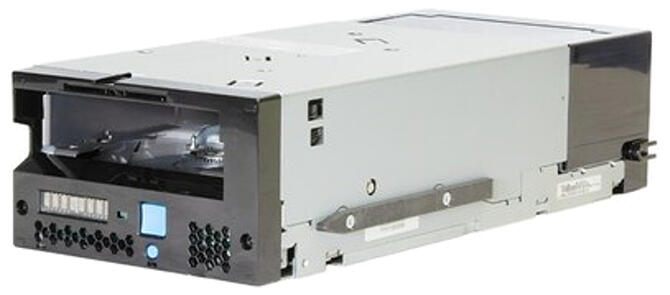Fujifilm and IBM announced on August 29 that they have developed a 50 TB (uncompressed) tape storage system, the world's highest storage capacity. The system is combined Fujifilm-developed magnetic tape 'IBM 3592 JF tape cartridge,' which uses a particulate hybrid magnetic material, and IBM's latest generation 'TS1170 drive,' and is marketed by IBM as an enterprise tape storage system. The amount of data in the world is expanding with the development of IoT/DX and the rapid spread of big data analysis using AI. Hard disk drives (HDDs), optical disks (CDs, DVDs, MOs), and magnetic tapes are commonly used as storage systems for vast amounts of data.

Provided by IBM
Among them, magnetic tape is used extensively for archiving and the backup of rapidly growing data because it is a storage medium that can store large volumes of data safely, securely, and inexpensively in a space-saving manner and does not require energization during data storage. Tape storage systems for large companies and government agencies are used by government agencies for the backup of various data due to their robustness. Further, they are used by research institutes and IT companies for high-performance computing and cloud services that utilize huge amounts of data for simulations, and their introduction is expected to further expand in the future. The tape storage system developed by the two companies has the world's highest uncompressed storage capacity of 50 TB (terabytes: a tera is a trillion), and a maximum compressed capacity of 150 TB.
To increase the capacity of such magnetic tapes, it is important to improve areal recording density which is the density of data that can be recorded per unit area and the recording area which is the area where data can be recorded.
Fujifilm has improved both of these areal recording densities and recording areas by evolving its proprietary technologies cultivated in the development of magnetic tapes to date and has succeeded in commercializing the world's highest storage capacity magnetic tape.
Regarding areal recording density, fine particle is a technology that combines nanoparticle design technology used in both strontium ferrite magnetic material, which is attracting attention as a next-generation magnetic material, and barium ferrite magnetic material, which is used in high-capacity magnetic tapes. A new 'particulate hybrid magnetic material' has been developed, and the magnetic material was made finer to improve the magnetic properties.
In addition, a high signal-to-noise ratio was achieved by utilizing Nano Dispersion technology that prevents the agglomeration of individual magnetic ultrafine particles and stably disperse the magnetic particles, and Nano Coating technology that coats tapes with the magnetic layer of the particles evenly and smoothly.
In contrast, with regards to the recording area, a base film that is thinner and stronger than the current product (IBM 3592 JE tape cartridge) is used for the magnetic tape support, and the tape length per data cartridge is extended by approximately 15% longer than the current product.
Deputy General Manager Keiichi Nagata of Fujifilm's Industrial Products Division said, "(This achievement) is a new milestone in our joint R&D efforts with IBM, and we are confident that it demonstrates the superiority and future potential of magnetic tape over other storage media."
Vice President Alistair Symon of IBM Storage Systems Development said (about the developed 01IBM 3592 JF Tape Cartridge), "It is the first tape storage media capable of storaging 50 TB, and it is used to store scientific data, industrial data, and data on the cloud. It is an ideal choice for applications that safely store data for long periods of time, and for active archive applications that balance storage and data utilization."
This article has been translated by JST with permission from The Science News Ltd. (https://sci-news.co.jp/). Unauthorized reproduction of the article and photographs is prohibited.




